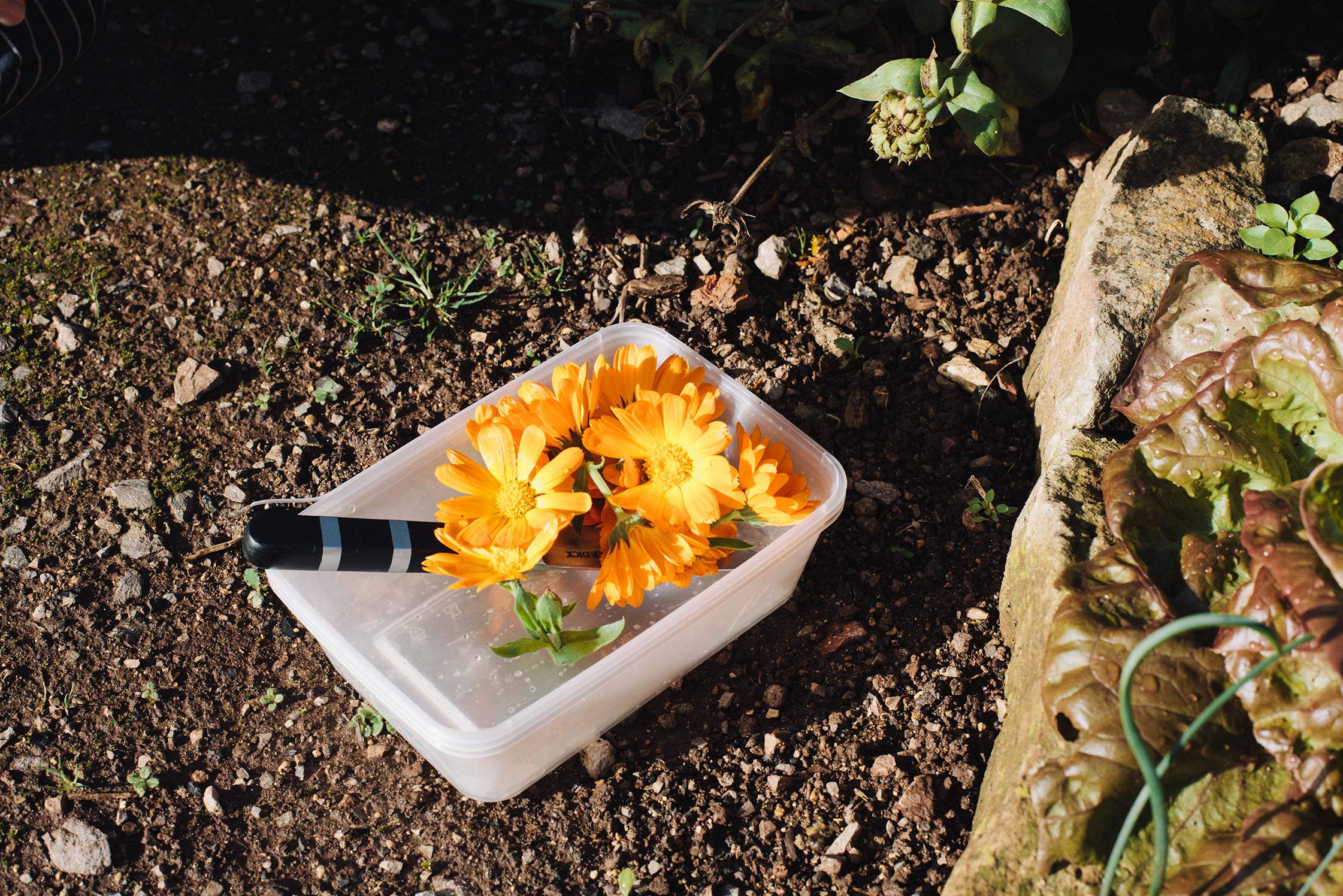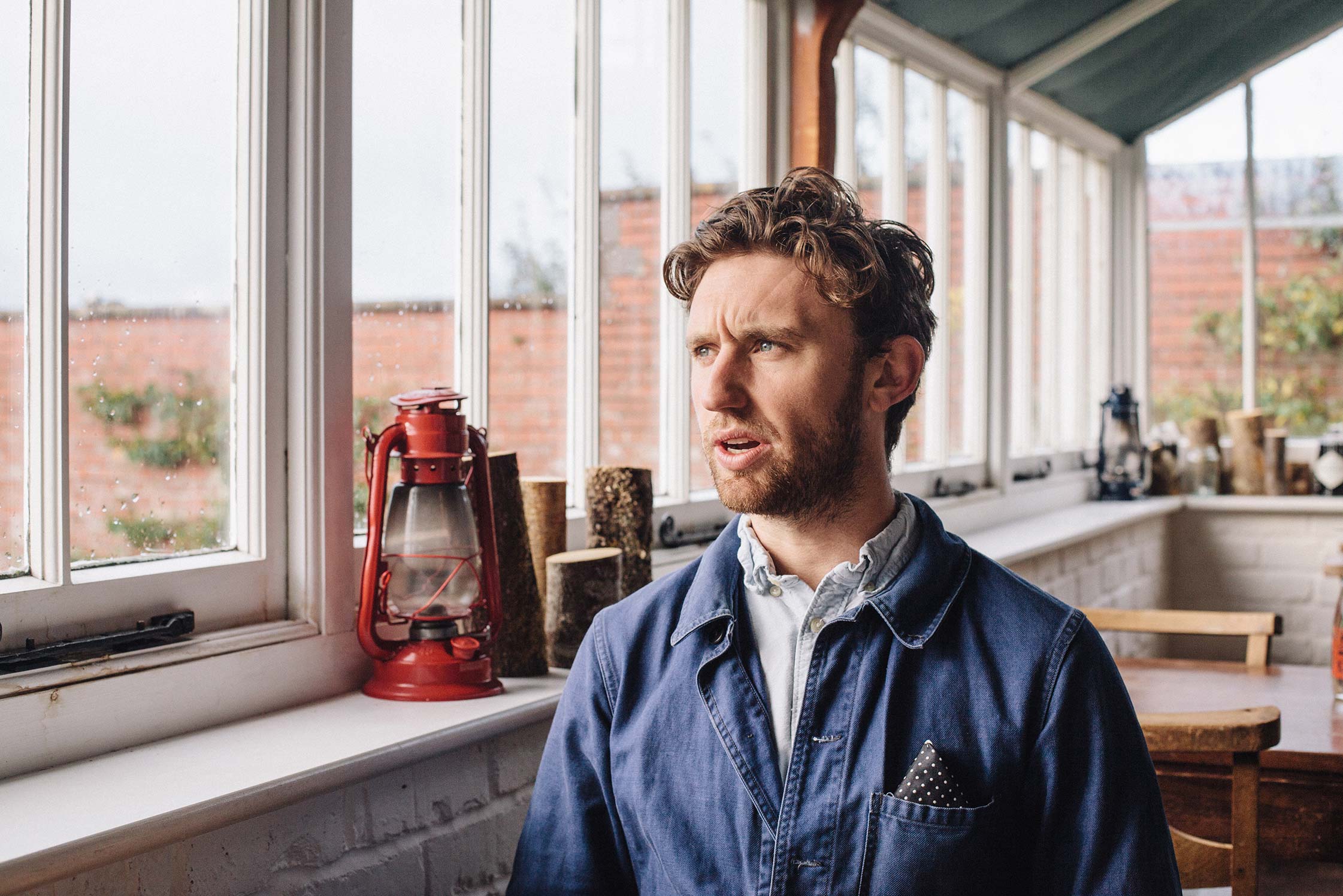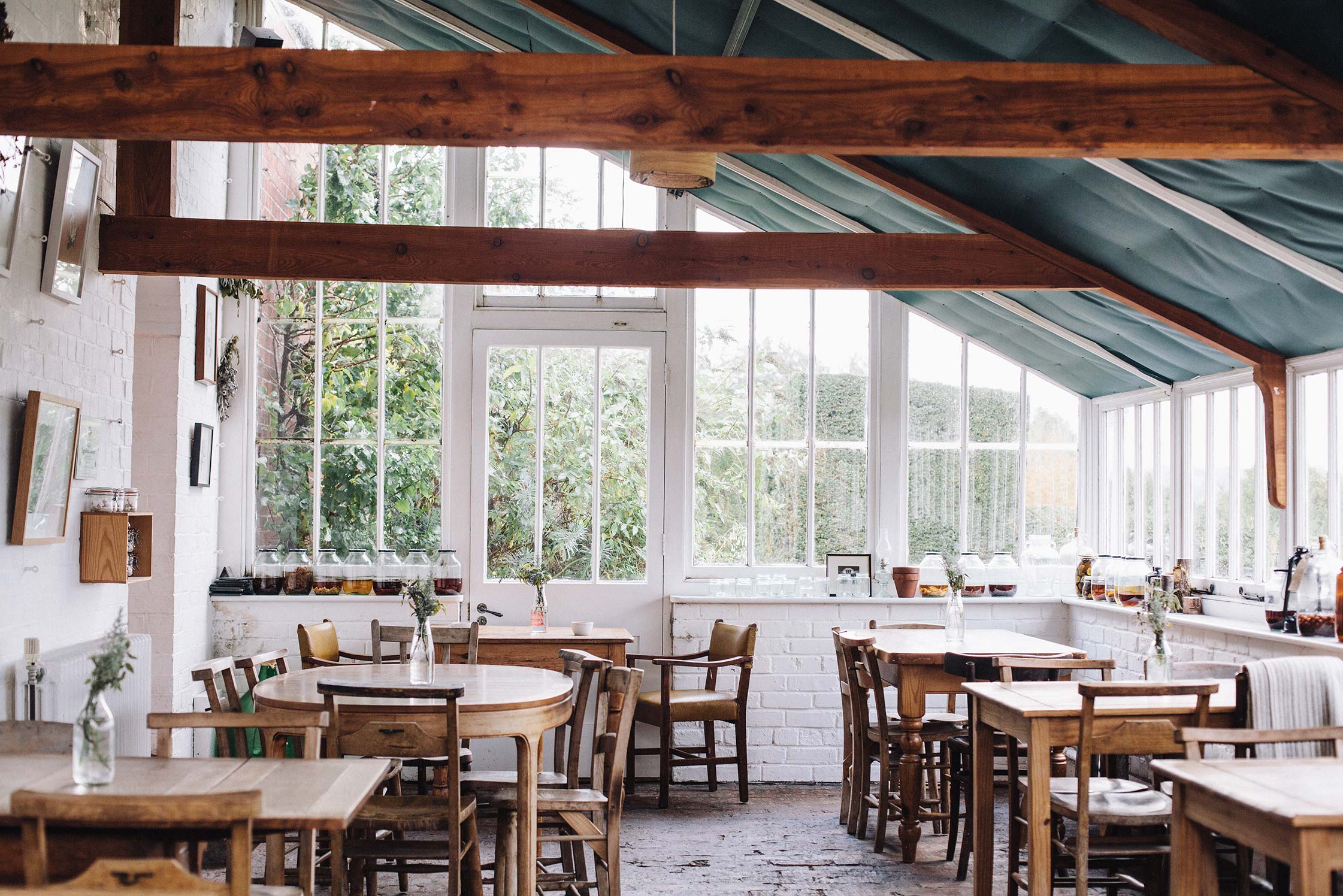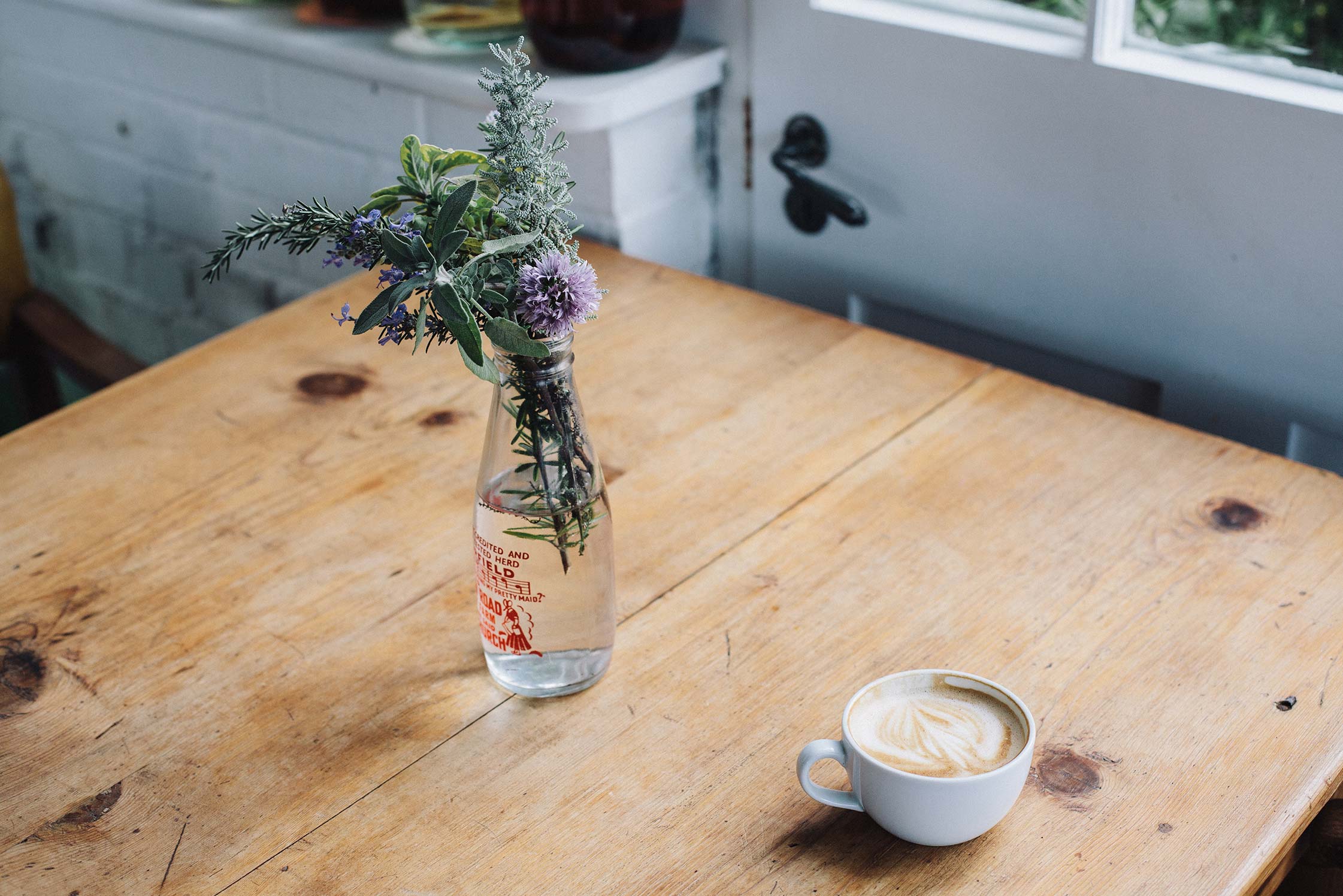Set in the bucolic Mendip Hills behind the red brick walls of an exquisite Victorian garden, The Ethicurean is a hidden treasure of the Somerset countryside. Focused on ethical sourcing of ingredients from the local environment, wood sorrel, oak moss and British summer truffles are just some of the locally foraged ingredients. This seasonal restaurant serves up a foray of mouthwatering dishes and cocktails, from beetroot carpaccio with honeyed walnuts to a Bristolian take on an Old Fashioned, everything is thoughtfully created and presented.
With a background working with ingredients sourced at farmers markets and developing a keen understanding for the seasons, friends Jack Adair Bevan, Paula Zarate and brothers Ian and Matthew Pennington started The Ethicurean. The ethos behind the name is simple, it seeks to embrace the French concept of ‘Terroir’, loosely translating to mean ‘a sense of place’. Everything, from the vegetable patches, bursting with marrows and fragrant herbs to the 19th century apothecary décor combine to create what Jack describes as a “quirky, fairytale-like” environment.
We sat down with Jack over a coffee and found out more about how they discovered the Walled Garden, what sources inspired their recently published cookbook and what the future holds for The Ethicurean.






































Tell us a bit about your background.
So initially we were all working at the farmers’ markets across Bristol and Somerset. We were buying produce from the farmers at the market, cooking it ourselves and then selling it to members of the public. We picked up a number of really interesting contracts from that including work with Hendricks gin and the Adventurist, Mongol Rally.
How did the concept for sustainable and seasonal cooking begin? What was the catalyst for establishing The Ethicurean?
Matthew and I came from a background of selling top European produce: hams from Trevelez, wines from the Languedoc, cheeses from the Savoie. We were aware that the UK equalled these places in its ability to produce incredible artisan products. Alongside Iain Pennington and Paula Zarate, we set up a business at farmers markets by purchasing produce from the other stall holders, then cooking it to sell it on other markets in the same week. We only worked with the ingredients we could buy at the time and developed a keen understanding for the seasons. We’d been selling single variety apple juice for a chap called Miles Bradley who told us that an apple juice and cider business had come up for sale. It came with an orchard that was planted with over 70 varieties of apples in a walled garden in Somerset. We visited it and found out that the cafe contained in the old glasshouse was also up for rent. There was no hesitation and we took on both businesses. We worked alongside Mark Cox the gardener from the first day, and just like the garden, we grew and developed our ideas.
The grounds and garden of the Barley Wood Walled Garden are extremely beautiful. Why did you decide on this location for the restaurant? Does the area hold significance for you?
The view from the restaurant looks over the Wrington Vale and Moor that lead onto the Somerset Levels. The area has a wealth of incredible dairy farmers, cheese makers, growers and brewers and is the perfect position from which to run a restaurant.
How long did it take to get the garden to a point where you could provide ingredients for the restaurant?
We were lucky enough to take on the restaurant and apple juice business after Mark Cox had already established a productive and well-ordered garden, so from the get go, we were able to use the garden to provide ingredients for the restaurant.
And do you source the majority of your ingredients from the garden?
Yes, the majority of our ingredients come from the garden. Things like onions and potatoes can’t, just because we go through so many of them, but all of our radishes, beetroots, fruits, salad leaves, and herbs come from the garden.
What are some of the most interesting ingredients you’ve foraged and cultivated for your dishes?
We love picking and using wood sorrel, oak moss and British summer truffles in our cooking. Mark produced a fine crop of figs this year, many of which we pickled with mustard seeds, chocolate stout beer, and cider vinegar.
And how do you go about sourcing the other food?
If we go anywhere else, it is to the community farm, which isn’t far away. All the customers that buy their vegetable boxes from the farm have a stake in the business. It’s amazing. People will also bring in a couple of trucks of something unique like quince and we will exchange that for food or a drink at The Ethicurean. So an interesting market community has developed there. We also shoot rabbits and deer.
What are your sources for inspiration?
In terms of inspiration for our book – we looked at lots of old texts such as Hartley, Beeton and Spry and also at the work of our favourite chefs like Heston Blumenthal. The product is the amalgamation of everything we have ever learnt, looked at, or liked.
When we read reviews of the restaurant, people have described the place as a slightly curious, bohemian fairytale land – that’s really just a result of the literature we read, the music we listen to, the food we cook and the drinks that we like. We want it to be a place where we, personally, want to hang out the whole time. So the inspiration isn’t a concept if you like, it’s just that we really love the place and continually seek to improve it.
What do you think it is about The Ethicurean, which really appeals to people?
I think the main thing is the view out the window, seeing everything growing in the garden, seeing Ian picking herbs and marigolds and flowers – there is a certain reassurance that can be taken from knowing that everything comes from the same place. I also think people enjoy the general aesthetic and feel of the place, the slightly Victorian apothecary, quirky, experimental, bottles and jars, cured meat on countertops, there is definitely a sense of fairytale about the whole thing.
Can you choose one of your favourite recipes from The Ethicurean Cookbook?
That would have to be smoked roe deer loin with wild rocket, clamped carrots, honeyed walnuts and wood sorrel. I shot the roe buck, Matthew picked the wood sorrel, Iain smoked the meat, Mark grew the carrots, and Paûla ate the dish! A real team effort.
What’s next for The Ethicurean?
We would very much like to open a bar, with some great complementary food, like British charcuterie, using meats like our own cured fallow, deer and goat. Eventually we would like to open another restaurant but it entirely depends on whether we can find the right place. We are always going to be in Barley Wood, we will always count this as our home – and if we do take a new place on – it’s got a lot to live up to in our minds.
Jack thanks so much for your time to show us around the grounds of The Ethicurean and explain your ethos in the kitchen. If you would like to to find out more about The Ethicurean visit their website here.
Photography: Robbie Lawrence
Interview & Text: Robbie Lawrence for Cereal Magazine & FvF

